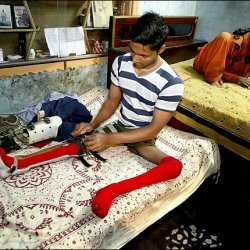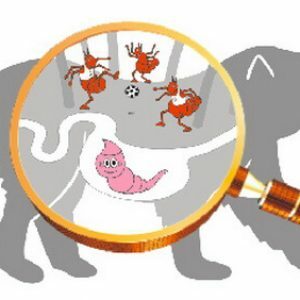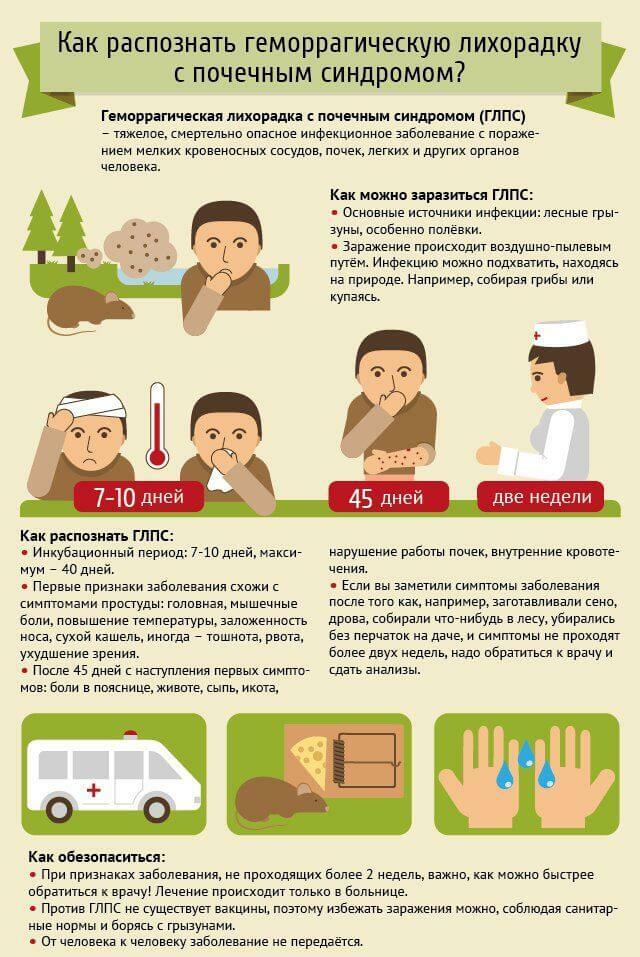Poliomyelitis: symptoms, signs, types, stages, therapy and prevention
 Poliomyelitis has another name - children's spinal paralysis, is a type of viral diseases. As a result of the disease, the human nervous system is affected, and the main damage is applied to the spinal cord. In addition, the localization of inflammatory processes occurs also in the nasopharyngeal mucosa and the intestinal tract.
Poliomyelitis has another name - children's spinal paralysis, is a type of viral diseases. As a result of the disease, the human nervous system is affected, and the main damage is applied to the spinal cord. In addition, the localization of inflammatory processes occurs also in the nasopharyngeal mucosa and the intestinal tract.
The only source of infection is a sick person. In the air, the virus of the disease falls through fecal-oral, as well as airborne. Within 3-7 days the pathogen is located on the mucosa, during this time and infection occurs through close breathing, unwashed vegetables and hands. Initially, the virus enters the oral cavity and then multiplies in the intestine. After the end of the incubation period, the active phase begins and the symptoms of the disease appear.
Children mostly under the age of 10 are affected by poliomyelitis, with 60-80% of the affected children being children up to the 4th age. The most dangerous period is summer and autumn, as in these seasons immunity is weakened.
The main symptoms of the disease
This disease belongs to the category of highly infectious diseases caused by a viral infection. Damage to the nervous system occurs in only a few hours. Doctors distinguish two forms of spinal paralysis:
- is paralytic or atypical, while there is no damage to the nervous system( CNS);
- is nonparalytic or typical - it affects the central nervous system.
The severity of the disease is divided into:
- severe condition;
- moderate condition;
- light form.
Signs of the disease
To determine the symptoms of spinal paralysis, one must understand that in the atypical form of the disease, several stages are distinguished. These stages differ in the manner of manifestation.
The first phase is a preparative phase, its duration is 3-5 days. During this time, the temperature rises sharply to 39.5 degrees. Patients in the first days feel a runny nose, pain in the nasopharynx and throat, migraine, nausea, sometimes indigestion occurs. These signs of patients are often regarded as an acute viral infection, and do not seek medical help. Sometimes, for some time( usually several days), the symptoms are relieved, and then the patient's condition worsens again, signs increase, and pains in the extremities and back appear. At this stage, the patient's mind is confused.
The second stage is paralytic, that is, at this stage, the patient paralyzes. This stage occurs suddenly and lasts for several hours. In this case, the patient is sluggish and immobile, he has a decline in muscle tone. The spread of paralysis occurs mainly on the limbs, but more often on the legs. Sometimes the muscles of the cervical region, as well as the trunk, occur. In addition to paralysis, spontaneous urination and sphincter defecation can occur. The most serious condition is immobilization of the patient's respiratory muscles, diaphragm, brain damage oblong, resulting in serious impairment of circulation and respiratory functions. To a lethal outcome most often leads to a disorder of the respiratory organs.
The third phase is a recovery phase, which can last from 14 days to 3 years. It is characteristic for this stage to restore the performance of paralyzed muscles. The regeneration process begins very swiftly, but then the pace slows down.
The fourth last period is the phase of the residual phenomena. At this stage, the restoration of muscle tissue occurs unevenly, flaccid paralysis of the limbs and deformation of the trunk.
Signs of a non-paralytic form of the disease
A typical form of this disease is characterized by the lesion of the spinal roots most often, and, more rarely, of the membranes of the brain. Usually the symptoms last 4-7 days. External signs are similar to signs of meningoradicitis or meningitis. With the non-paralytic form of the disease, the following symptoms appear:
- sore throat;
- common cold;
- severe cough;
- short-lived fever;
- vomiting;
- nausea;
- indigestion - constipation or diarrhea.
As soon as the following symptoms occur, emergency care should be urgently called:
- paralysis of facial muscles;
- with phonation;
- there are difficulties in swallowing food;
- in case of tension of the occipital muscles;
- for diarrhea and weakness;
- with increased sensitivity or abnormality, tingling of the skin;
- appearance of muscle tone of the back, fever, difficulty breathing;
- in case of severe headaches, dyspnea.
Therapy of the disease
To date, there are no antiviral drugs in medicine that target specific poliomyelitis therapy. Patients are placed in the box, and depending on the phase of the disease, complex methods for the elimination of symptoms are prescribed:
- In the preparative phase, the main method of therapy is taking painkillers, sedatives, decongestants. In addition, symptomatic therapy is provided: antibiotics, B vitamins, antipyretic drugs( nurofen, paracetamol), antihypoxants. In this period, patients are in the isolation box, it is prescribed compliance with the pastel regime for 2 to 3 weeks.
- At the paralytic stage, patients are prescribed the administration of immunoglobulin.
- During paralysis, the patient is placed in a separate box on the hard mattress in the following position: legs are extended along the body, and the stops are fixed with a static tire in a comfortable position. In the event of a lesion of the respiratory musculature during the seizure, the patient is transferred to the artificial ventilation of his lungs.
- During the recovery phase, the patient is prescribed anticholinesterase drugs, glutamic acid, electrostimulation, water procedures, physiotherapy, exercise therapy and sanatorium treatment.
Sometimes orthopedic treatment is prescribed in order to correct disorders and deformations in the body's contractures, depending on the characteristics and severity of the disease.
Prevention of poliomyelitis
In modern medicine, the only method of preventing poliomyelitis is vaccination. Vaccinations are made in several stages, established by the rules of the vaccination calendar. Vaccination is performed at 3, 4, and also at 5 months, and then at 5 years, 20 months and at 14 years of age, booster is given.
Many parents are afraid to get negative complications after vaccinations and refuse to vaccinate against poliomyelitis. According to statistics, in only one case of 200, irreversible paralysis can occur. And 5-10% of patients with polio die as a result of paralysis of the muscles of the respiratory system. Parents, before giving up vaccination, should weigh all the positive and negative points, because without vaccination they leave their child without protection.



